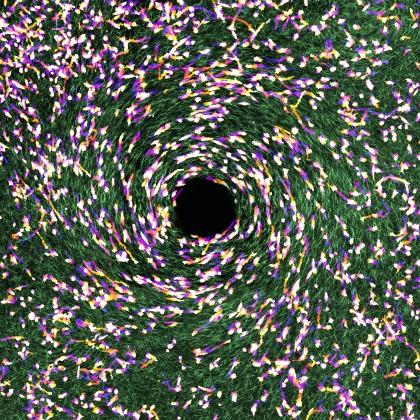 |
Oregon State research shows how tissue’s microscopic geometry affects spread of cancer |
CORVALLIS, Ore. – Oregon State University research has revealed a crucial mechanism behind one of humankind’s most deadly physiological processes: the movement of malignant cells from one part of the body to another. |
 |
Low-level thinning can help restore redwood forests without affecting stream temperatures |
CORVALLIS, Ore. – Selectively cutting trees in riparian zones to aid forest restoration can be done without adversely affecting streams’ water temperature as long as the thinning isn’t too intensive, new research by Oregon State University shows. |
 |
Like wine, environmental conditions impact flavor of whiskey, study finds |
Flavor differences in whiskey can be discerned based solely on the environment in which the barley used to make the whiskey is grown, a new study co-authored by an Oregon State University researcher found. |
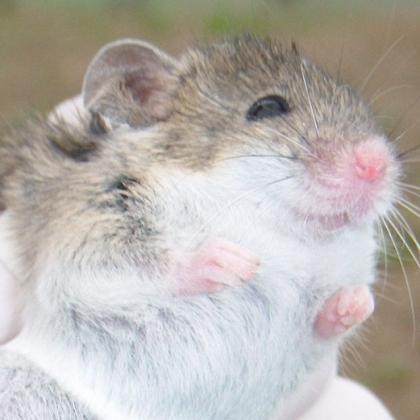 |
Electrical transmission lines have power to enhance habitat connectivity for wildlife |
CORVALLIS, Ore. – Converting the ground under electrical transmission towers into spaces for wildlife can enable fragmented populations to connect with one another, increasing local biodiversity and providing animals around the globe an important tool for adapting to climate change, a new study found. |
 |
Biological assessment of world’s rivers presents incomplete but bleak picture |
An international team of scientists, including two from Oregon State University, conducted a biological assessment of the world’s rivers and the limited data they found presents a fairly bleak picture. |
 |
Researchers demonstrate new method to track genetic diversity of salmon, trout |
Scientists at Oregon State University and the U.S. Forest Service have demonstrated that DNA extracted from water samples from rivers across Oregon and Northern California can be used to estimate genetic diversity of Pacific salmon and trout. |
 |
Melanoma patients respond to immunotherapy after changes to gut microbiome |
CORVALLIS, Ore. – Statistical modeling developed by Oregon State University researchers has confirmed that changes to melanoma patients’ gut microbiome led them to respond to a type of treatment capable of providing long-term benefit. |
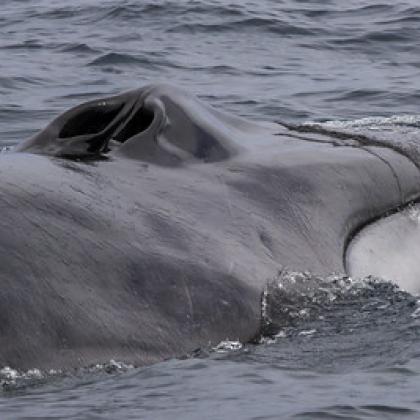 |
The songs of fin whales offer new avenue for seismic studies of the oceanic crust |
The songs of fin whales can be used for seismic imaging of the oceanic crust, providing scientists a novel alternative to conventional surveying. |
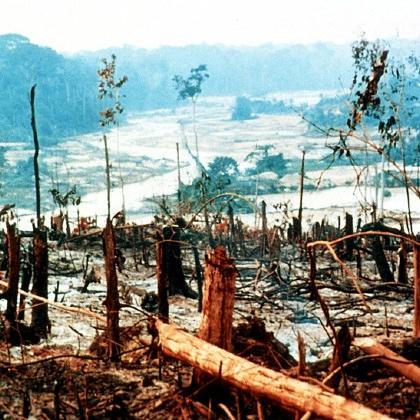 |
Protected areas see continued deforestation but at a reduced rate, OSU research shows |
CORVALLIS, Ore. – A survey of more than 18,000 land parcels spanning 2 million square miles across 63 countries shows that a “protected area” designation reduces the rate of deforestation but does not prevent it. |
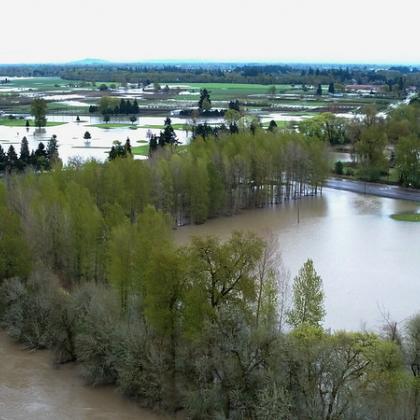 |
Flooding in the Columbia River basin expected to increase under climate change, study finds |
The Columbia River basin will see an increase in flooding over the next 50 years as a result of climate change, new modeling from Oregon State University indicates. |
 |
Genetic markers show Pacific albacore intermingle across equator but remain separate stocks |
NEWPORT, Ore. – Analyzing thousands of genetic markers in albacore tuna from the Pacific Ocean, researchers at Oregon State University have learned that just seven dozen of those markers are needed to determine which side of the equator a fish comes from. |
 |
OSU’s TRACE Community COVID-19 sampling in Redmond suggests 32 cases per 1,000 residents |
REDMOND, Ore. – Oregon State University COVID-19 sampling in Redmond on Jan. 29-31 by TRACE Community field workers suggested 32 people per 1,000 in the community carried the coronavirus on those days. |
 |
Notes of discomfort: OSU study keys in on trends in marching band members’ workload strain |
CORVALLIS, Ore. – Marching band members in leadership roles are more likely to feel discomfort in the neck and upper back than their less experienced bandmates, who in turn are more susceptible to left-hand pain and cognitive strain, a new study by Oregon State University suggests. |
 |
New DNA-based technique allows researchers to determine age of living beluga whales in Alaska |
Researchers can now determine the age and sex of living beluga whales in Alaska’s Cook Inlet thanks to a new DNA-based technique that uses information from small samples of skin tissue. |
 |
OSU scientists taking deep dive into how microbiomes respond to human-caused stressors |
CORVALLIS, Ore. – Oregon State University scientists have received a $3 million National Science Foundation grant to study how communities of microorganisms respond to human-caused stress and how the responses relate to the health of the people, plants and animals that host the microbes.
|
 |
Sea ice kept oxygen from reaching deep ocean during last ice age, study finds |
Extensive sea ice covered the world’s oceans during the last ice age, which prevented oxygen from penetrating into the deep ocean waters, complicating the relationship between oxygen and carbon, a new study has found. |
 |
Finding rare birds is never a picnic, contrary to popular Patagonia belief |
CORVALLIS, Ore. – One of birdwatching’s most commonly held and colorfully named beliefs, the Patagonia Picnic Table Effect, is more a fun myth than a true phenomenon, Oregon State University research suggests. |
 |
OSU genetic sequencing detects mutant strains of COVID-19 in multiple Oregon locations |
Genetic sequencing of COVID-19 samples done by Oregon State University’s Center for Genome Research and Biocomputing has detected multiple variants of the SARS-CoV-2 virus that causes COVID-19 in samples from around the state, including the highly contagious U.K. strain in one sample from Bend, Oregon. |
 |
Researchers ‘cautiously optimistic’ about desert bighorn sheep recovery in California’s Mojave Desert |
Desert bighorn sheep in the Mojave National Preserve in California and surrounding areas appear to be more resilient than previously thought to a respiratory disease that killed dozens of them and sickened many more in 2013, a new study has found. |
 |
OSU llevará el muestreo de Comunidad TRACE COVID-19 a Redmond este fin de semana |
REDMOND, Ore. – El proyecto innovador de la Universidad Estatal de Oregón para determinar la prevalencia comunitaria del nuevo coronavirus se está expandiendo para incluir tres días de muestreo de la Comunidad TRACE esta semana en Redmond los días 29, 30 y 31 de enero. |
 |
Oregon State receives grant to spur aquaculture investment in Oregon |
Oregon State University has received a nearly $700,000 grant from the National Oceanic and Atmospheric Administration to provide software tools for investors interested in starting aquaculture businesses in Oregon. |
 |
Dogs synchronize their behavior with children, but not as much as with adults, study finds |
Dogs synchronize their behavior with the children in their family, but not as much as they do with adults, a new study from Oregon State University researchers found. |
 |
OSU to bring TRACE Community COVID-19 sampling to Redmond this weekend |
REDMOND, Ore. – Oregon State University’s groundbreaking project to determine community prevalence of the novel coronavirus is expanding to include three days of TRACE Community sampling this week in Redmond on Jan. 29, 30 and 31. |
 |
Even a small amount of gender bias in hiring can be costly to employers, study finds |
Tiny amounts of gender bias in employee hiring decisions contribute to concerning rates of discrimination and productivity losses that together represent significant costs, financial and otherwise, for employers, a new study from Oregon State University has found. |
 |
Speakers announced for first national hemp symposium at Oregon State University |
Business, political and governmental leaders, including a U.S. Senator and representatives from the Sierra Club and American multinational conglomerate corporation 3M, will provide a future outlook on the hemp industry during the first-ever National Hemp Symposium Feb. 9 and 10. |
 |
Oregon State University wave lab receives $4.9M to continue natural hazards engineering research |
CORVALLIS, Ore. – The National Science Foundation has awarded the Oregon State University College of Engineering nearly $5 million for natural hazards engineering research at OSU’s O.H. Hinsdale Wave Research Laboratory. |
 |
Applicants sought for free girls’ summer wilderness science education expeditions |
Inspiring Girls Expeditions, which offers free, 12-day wilderness science leadership and learning adventures for high school girls, is seeking applicants for its summer 2021 expeditions. |
 |
Bees respond to wildfire aftermath by producing more female offspring |
CORVALLIS, Ore. – Researchers at Oregon State University have found that the blue orchard bee, an important native pollinator, produces female offspring at higher rates in the aftermath of wildfire in forests. |
 |
Master of disguise is new genus and species of cylindrical bark beetle |
CORVALLIS, Ore. – A resemblance to moss, lichens and fungi made for fantastic cover by a new genus and species of cylindrical bark beetle described by an Oregon State University College of Science researcher. |
 |
New nanostructured alloy for anode is a big step toward revolutionizing energy storage |
CORVALLIS, Ore. – Researchers in the Oregon State University College of Engineering have developed a battery anode based on a new nanostructured alloy that could revolutionize the way energy storage devices are designed and manufactured. |
 |
Neighbors influence coastal landowners’ decisions to armor shorelines against erosion, rising seas |
Neighbors play an influential role in private oceanfront landowners’ decisions to protect their shorelines from erosion and rising sea levels, which could lead to excessive armoring of the coastline, a new analysis from Oregon State University shows. |
 |
Combining solar energy and agriculture to mitigate climate change, assist rural communities |
Co-developing land for both solar photovoltaic power and agriculture could provide 20% of total electricity generation in the United States with an investment of less than 1% of the annual U.S. budget, a new paper by Oregon State University researchers found. |
 |
Use of ocean resources changed as Dungeness crab fishing industry adapted to climate shock event |
An unprecedented marine heat wave that led to a massive harmful algal bloom and a lengthy closure of the West Coast Dungeness crab fishery significantly altered the use of ocean resources across seven California crab-fishing communities. |
 |
Alert system shows potential for reducing deforestation, mitigating climate change |
Forest loss declined 18% in African nations where a new satellite-based program provides free alerts when it detects deforestation activities. |
 |
Research shows a few beneficial organisms could play key role in treating type 2 diabetes |
Researchers at Oregon State University have found that a few organisms in the gut microbiome play a key role in type 2 diabetes, opening the door to possible probiotic treatments for a serious metabolic disease affecting roughly one in 10 Americans. |
 |
New flower from 100 million years ago brings fresh holiday beauty to 2020 |
CORVALLIS, Ore. – Oregon State University researchers have identified a spectacular new genus and species of flower from the mid-Cretaceous period, a male specimen whose sunburst-like reach for the heavens was frozen in time by Burmese amber. |
 |
Hormone metabolites found in poop give researchers new insight into whale stress |
Poop samples are an effective, non-invasive tool for monitoring gray whale reproduction, stress and other physiological responses, a new study from Oregon State University shows. |
 |
Oregon State University receives $7.1 million for six more years of long-term forest research |
CORVALLIS, Ore. – Oregon State University has been awarded $7.1 million from the National Science Foundation for another six years of long-term ecological research on the HJ Andrews Experimental Forest on the western slope of the Cascade Range southeast of Corvallis. |
 |
Sea star listed as critically endangered following research by Oregon State University |
CORVALLIS, Ore. – The iconic sunflower sea star has been listed as critically endangered by the International Union for Conservation of Nature following a groundbreaking population study led by Oregon State University and The Nature Conservancy. |
 |
Land Board votes to keep pursuing Oregon State University management of Elliott State Forest |
CORVALLIS, Ore. – Oregon’s State Land Board voted Tuesday to continue the process of evaluating how to transform the Elliott State Forest into a research forest managed by Oregon State University and its College of Forestry. |
 |
Oregon State students engineer solution for longtime trucking industry safety problem |
CORVALLIS, Ore. – Students in the Oregon State University College of Engineering have helped the trucking industry get a handle on a longstanding safety problem: drivers slipping and falling while exiting or entering their cab. |
 |
Breakthrough optical sensor mimics human eye, a key step toward better artificial intelligence |
CORVALLIS, Ore. – Researchers at Oregon State University are making key advances with a new type of optical sensor that more closely mimics the human eye’s ability to perceive changes in its visual field. |
 |
No poaching occurring within most Channel Islands marine protected areas, new analysis shows |
Fish are thriving and poachers are staying out of marine protected areas around California’s Channel Islands, a new population analysis by an Oregon State University researcher shows. |
 |
Oregon State University to host first national symposium on hemp |
Oregon State University’s Global Hemp Innovation Center and the Board on Agriculture and Natural Resources, a major program unit of the National Academies of Sciences, Engineering, and Medicine, will host the first-ever National Hemp Symposium on Feb. 9 and 10. |
 |
Oregon State University receives $2 million Packard Foundation grant to expand TRACE-COVID-19 nationally |
CORVALLIS, Ore. – Oregon State University researchers have received a $2 million grant from the David and Lucile Packard Foundation to create a national TRACE Center that will expand the OSU’s COVID-19 public health project to other states. |
 |
Three from Oregon State University honored as AAAS fellows |
CORVALLIS, Ore. – Seminal contributions in barley breeding, soil nitrogen cycling and computer modeling for how fluids move through sediments and other porous materials have placed three Oregon State University professors among 489 researchers selected this year as American Association for the Advancement of Science fellows. |
 |
Oregon State TRACE results suggest five people per 1,000 in Eugene infected with SARS-CoV-2 |
CORVALLIS, Ore. – Results from door-to-door sampling Nov. 7 and 8 by Oregon State University and the University of Oregon suggest that about five people per 1,000 in Eugene at the time had the virus that causes COVID-19. |
 |
Pacific Northwest youth to explore agriculture through virtual reality, other online activities |
Oregon State University’s Precollege Programs and the SMILE Program are partnering with the OSU Extension Service 4-H Youth Development Program to lead the effort to implement an innovative Agriculture Distance Education Toolkit. |
 |
Oregon State researchers make key advance for printing circuitry on wearable fabrics |
CORVALLIS, Ore. – Electronic shirts that keep the wearer comfortably warm or cool, as well as medical fabrics that deliver drugs, monitor the condition of a wound and perform other tasks, may one day be manufactured more efficiently thanks to a key advance by Oregon State University researchers. |
 |
Formal community forest management policies often lead to reduced access, resource rights |
CORVALLIS, Ore. – The most comprehensive global analysis of community forestry ever undertaken shows that government policies formalizing local residents’ land access and resource rights often backfire by resulting in less access and weakened rights. |
 |
Oregon State names Tumer vice president for research |
Irem Tumer, who has helped lead Oregon State University’s research enterprise to record-setting funding levels, has been named vice president for research at the university. |
 |
Shifts in water temperatures affect eating habits of larval tuna at critical life stage, study finds |
Small shifts in ocean temperature can have significant effects on the eating habits of blackfin tuna during the larval stage of development, when finding food and growing quickly are critical to long-term survival. |
 |
Oregon State University, University of Oregon team up to bring TRACE sampling to Lane County |
CORVALLIS, Ore. – Scientists and students from Oregon State University and the University of Oregon are teaming up to bring OSU’s TRACE Community COVID-19 public health project to Eugene the weekend of Nov. 7 and 8 at the request of Lane County Public Health. |
 |
OSU adding to Corvallis COVID-19 prevalence understanding via citywide wastewater analyses |
Oregon State University researchers say wastewater sampling for the novel coronavirus shows the virus is present in every region of Corvallis, with a moderate increase in virus levels over the past month following the low detection levels that took hold in mid-July. |
 |
Oregon State coral researchers find link between bacterial genus and disease susceptibility |
CORVALLIS, Ore. – Corals that appear healthy are more prone to getting sick when they’re home to too many parasitic bacteria, new research at Oregon State University shows. |
 |
Gut bacteria associated with animal-based diet may mitigate risk of cardiovascular disease |
CORVALLIS, Ore. – Oregon State University researchers have found that a type of common gut bacteria sometimes associated with inflammation, abscesses, bowel disease and cancer has a major silver lining: It seems to help prevent cardiovascular disease. |
 |
Oregon State researchers working on a better, faster way to design and maintain buildings |
CORVALLIS, Ore. – Researchers in the Oregon State University College of Engineering are looking for a better, faster way for architects and engineers to design, construct and manage buildings. |
 |
Oregon State researchers mobilize to study impact of wildfire smoke on wine |
Oregon State University scientists have analyzed almost 500 samples of wine and grapes from throughout Oregon in recent weeks to better understand the impact of smoke on wine. |
 |
Oregon State study finds room for improvement when hospital patients transition to hospice care |
PORTLAND, Ore. – Terminally ill patients referred to hospice care from a hospital setting tend to be on hospice for shorter periods than those who enter hospice while living at home or in a residential care facility. |
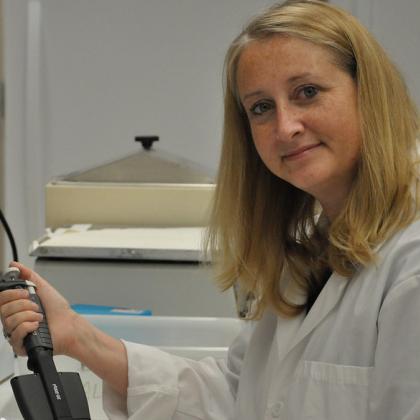 |
Predicting the cancer-causing potential of chemicals released from wildfires, fossil fuel burning |
Oregon State University scientists have developed a method that could potentially predict the cancer-causing potential of chemicals released into the air during wildfires and fossil fuel combustion. |
 |
Zero positives among more than 300 tested in Sackett residence hall, GEM apartment building |
CORVALLIS, Ore. – Oregon State University tested more than 300 people at two student housing facilities this past week for the virus that causes COVID-19 after evidence of the virus was found in the buildings’ sewage, and all of the individuals tested were negative. |
 |
Fifth round of Corvallis TRACE-COVID-19 sampling suggests three people in 1,000 have virus |
CORVALLIS, Ore. – Oregon State University’s fifth round of door-to-door sampling throughout the Corvallis community by TRACE-COVID-19 field workers on Sept. 26 and 27 suggested three people per 1,000 in the community carried the novel coronavirus on those days. |
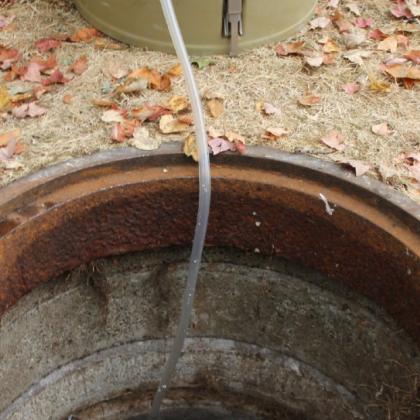 |
OSU wastewater sampling finds viral evidence in Sackett residence hall, GEM apartment building |
CORVALLIS, Ore. – TRACE OSU’s wastewater investigators have detected moderate genetic signals of the virus that causes COVID-19 in sewer outflows from a residence hall on the west side of Oregon State University’s Corvallis campus and a privately owned apartment building just north of campus. |
 |
Vessel noise present year-round at Cordell Bank National Marine Sanctuary near San Francisco |
The environment in the Cordell Bank National Marine Sanctuary off the coast of San Francisco is not a refuge from the noise generated by ship traffic, the first underwater marine acoustic study of the region has shown. |
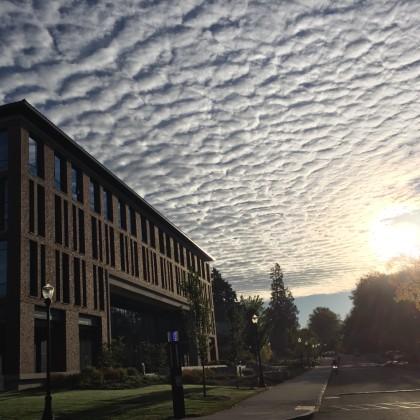 |
Oregon State leads push to include innovation, entrepreneurship in faculty promotion, tenure criteria |
CORVALLIS, Ore. – Culminating a project led by Oregon State University, leaders from 67 universities and 13 national organizations have unanimously voted to approve a set of recommendations for recognizing innovation and entrepreneurial achievements among the criteria for higher education faculty promotion and tenure. |
 |
Salute the venerable ensign wasp, killing cockroaches for 25 million years |
CORVALLIS, Ore. – An Oregon State University study has identified four new species of parasitic, cockroach-killing ensign wasps that became encased in tree resin 25 million years ago and were preserved as the resin fossilized into amber. |
 |
Fifth round of Corvallis TRACE-COVID-19 sampling set for Sept. 26 and 27 |
CORVALLIS, Ore. – Oregon State University will conduct its fifth round of door-to-door sampling throughout Corvallis this weekend on Sept. 26 and 27 for the novel coronavirus that causes COVID-19. |
 |
TRACE-OSU to support health and safety with in-person, wastewater SARS-CoV-2 testing |
CORVALLIS, Ore. – Oregon State University will extend its ongoing TRACE-COVID-19 project to support safer and healthier environments for its students, faculty and staff by providing weekly prevalence testing during fall term on OSU’s campuses in Corvallis and Bend. Prevalence testing also will occur at the Hatfield Marine Science Center in Newport. |
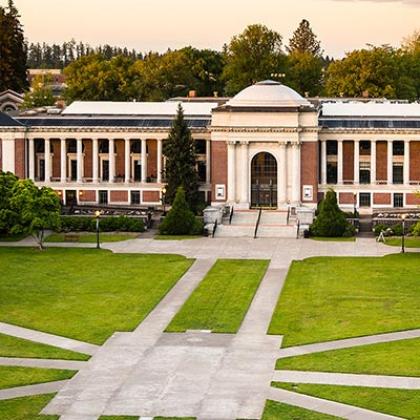 |
Acclaimed author kicks off seminar on ecology, evolution and conservation biology of pandemics |
CORVALLIS, Ore. – Science journalist David Quammen, author of 16 books including “Spillover: Animal Infections and the Next Human Pandemic” in 2012, will give a virtual public presentation at 3 p.m. Friday to kick off the Oregon State University seminar series, “What can ecology, evolution and conservation biology contribute to understanding global pandemics?” |
 |
Oregon State-led project receives $10M grant to harness biomedical knowledge to aid patients, doctors and researchers |
A group of researchers led by a team at Oregon State University have received a $10 million grant from the National Institutes of Health to establish a Center of Excellence in Genomic Science where they will develop tools to modernize how medical knowledge about genetic conditions is captured, stored and exchanged. |
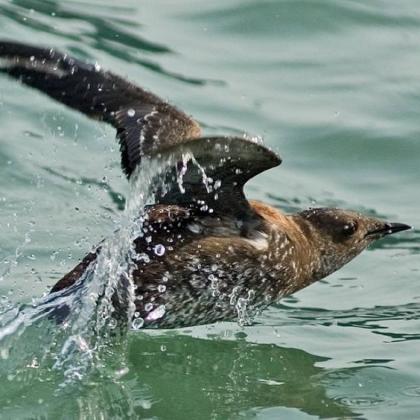 |
Warming ocean, old-forest loss put a squeeze on an elusive seabird, the marbled murrelet |
CORVALLIS, Ore. – Squeezed by changing ocean conditions that limit their food options and the long-term loss of old forest needed for nesting, marbled murrelets would benefit most from conservation efforts that take both ocean and forest into account, new research by Oregon State University shows. |
 |
With awards totaling nearly $450 million, Oregon State sets record for annual research funding |
CORVALLIS, Ore. – Research funding at Oregon State University increased by more than $10 million in the last fiscal year to almost $450 million, setting a university record and marking the third time in four years that OSU’s research awards have totaled more than $400 million. |
 |
Study shows vitamin E needed for proper nervous system development |
In research with key ramifications for women of childbearing age, findings by Oregon State University scientists show that embryos produced by vitamin E-deficient zebrafish have malformed brains and nervous systems. |
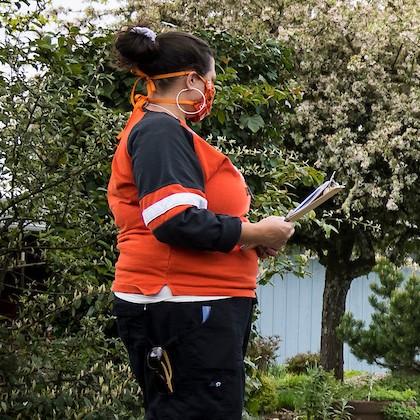 |
Fifth round of Corvallis TRACE-COVID-19 sampling postponed again as smoke persists |
CORVALLIS, Ore. – Oregon State University is again postponing its fifth round of door-to-door sampling in Corvallis for the novel coronavirus that causes COVID-19 because of continuing poor air quality caused by wildfires in the Pacific Northwest. |
 |
Smoke postpones TRACE-COVID-19 sampling scheduled for Sept. 12-13 in Corvallis |
CORVALLIS, Ore. – Oregon State University is rescheduling this weekend’s fifth round of door-to-door sampling in Corvallis for the novel coronavirus that causes COVID-19 because of poor air quality caused by numerous wildfires in the Pacific Northwest. |
 |
Fifth weekend of Corvallis TRACE-COVID-19 sampling to take place Sept. 12-13 |
CORVALLIS, Ore. – Oregon State University will conduct a fifth round of door-to-door sampling in Corvallis this weekend on Sept. 12 and 13 for the novel coronavirus that causes COVID-19. |
 |
Dietary changes could produce big offsets to carbon emissions |
CORVALLIS, Ore. – Eating less meat and dairy products in favor of plant-based proteins like those found in grains, legumes and nuts could make a huge difference in how much carbon dioxide reaches the atmosphere, research by Oregon State University shows. |
 |
Beavers appear to help the growth of brown trout in South America, study finds |
Through field work in a remote area of Tierra del Fuego, Chile, OSU researchers determined that dam building by the beaver enables a wider range of more energy-dense food sources for brown trout. |
 |
OSU spinoff NuScale passes major regulatory milestone as feds sign off on reactors’ safety |
CORVALLIS, Ore. – NuScale Power, founded by Oregon State University Professor Emeritus José Reyes during his time at OSU, has marked a major regulatory milestone on the way to supplying power plant developers with small modular reactors designed by the company. |
 |
Corvallis sewer surveillance: Novel coronavirus still present but trending downward |
CORVALLIS, Ore. – Genetic evidence in Corvallis wastewater of the virus that causes COVID-19 has been consistently detected at moderate levels for the past month following a late July spike, said Tyler Radniecki, associate professor of environmental engineering at Oregon State University. |
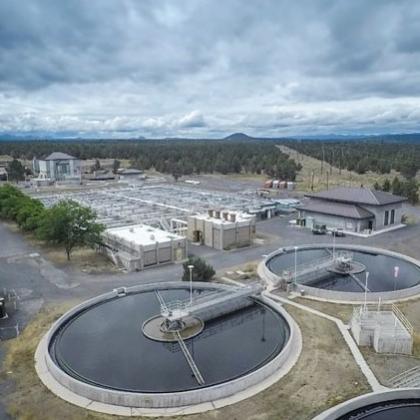 |
Oregon State receives Oregon Health Authority grant to expand Coronavirus Sewer Surveillance |
CORVALLIS, Ore. – Oregon State University has received a $1.2 million grant from the Oregon Health Authority to expand its Coronavirus Sewer Surveillance project throughout Oregon to comb community wastewater systems for genetic evidence of the virus that causes COVID-19. |
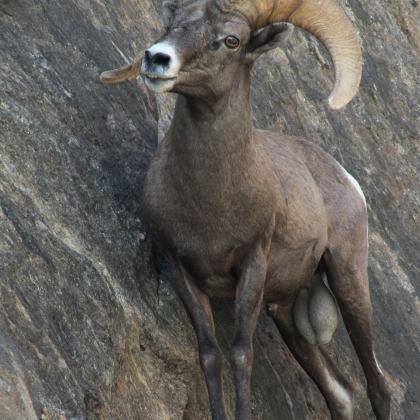 |
Native desert bighorn sheep in ecologically intact areas are less vulnerable to climate change |
The researchers used genetic information from more than 1,600 individuals in 62 populations in and around 10 National Park Service units in four states – Arizona, California, Nevada and Utah. |
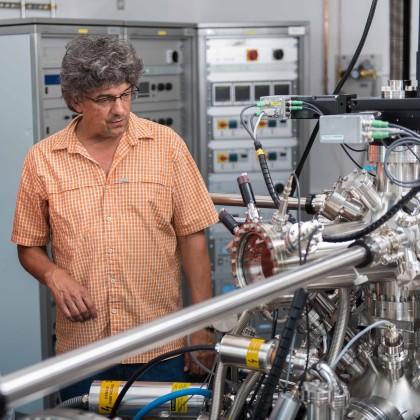 |
Oregon State, University of Washington receive another $5 million to advance nanotech innovation |
The National Science Foundation has awarded an additional $5 million to Oregon State University and the University of Washington to continue leading a nanotechnology research partnership that’s already enabled breakthroughs in areas such as glucose monitoring for diabetics, better solar cells, improved battery electrodes and more energy-efficient fiber optic networks |
|
|
Firefighters exposed to more potentially harmful chemicals than previously thought |
The on-duty firefighters in the Kansas City, Missouri, area experienced higher exposures of polycyclic aromatic hydrocarbons, or PAHs, which are a family of chemicals that are known to have the potential to cause cancer. |
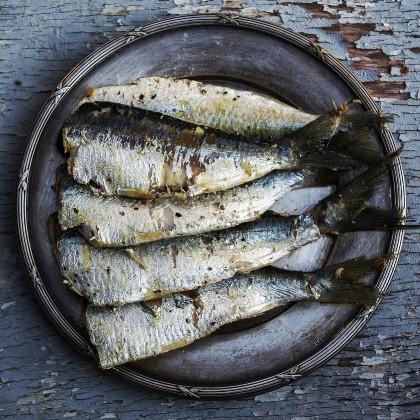 |
Seafood could account for 25% of animal protein needed to meet projected increases in demand |
CORVALLIS, Ore. – Policy reforms and technological improvements could drive seafood production upward by as much as 75% over the next three decades, research by Oregon State University and an international collaboration suggests. |
 |
Multivitamin, mineral supplement linked to less-severe, shorter-lasting illness symptoms |
CORVALLIS, Ore. – Older adults who took a daily multivitamin and mineral supplement with zinc and high amounts of vitamin C in a 12-week study experienced sickness for shorter periods and with less severe symptoms than counterparts in a control group receiving a placebo. |
 |
OSU researchers make green chemistry advance with new catalyst for reduction of carbon dioxide |
Researchers at Oregon State University have made a key advance in the green chemistry pursuit of converting the greenhouse gas carbon dioxide into reusable forms of carbon via electrochemical reduction. |
 |
Lipoic acid supplements help some obese but otherwise healthy people lose weight |
A compound given as a dietary supplement to overweight but otherwise healthy people in a clinical trial caused many of the patients to slim down, research by Oregon State University and Oregon Health & Science University showed. |
 |
Study points out opioid risks for hospital patients transitioning to skilled nursing facilities |
PORTLAND, Ore. – Hospital patients discharged to skilled nursing facilities often bring a high-dose painkiller prescription with them, suggesting more attention should be paid to opioid safety for those patients, research from the Oregon State University College of Pharmacy shows. |
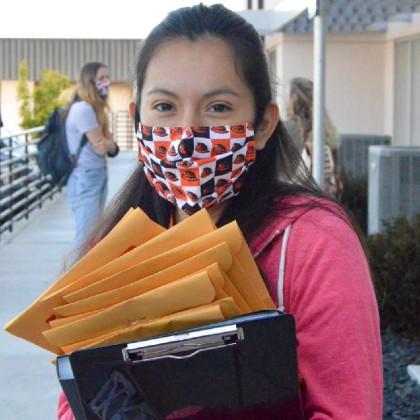 |
What to do in Umatilla County in response to COVID-19? |
In light of community testing results that indicate Hermiston’s rate of COVID-19 is dangerously high, public health leaders are encouraging residents and employees of local businesses to wear face coverings, stay 6 feet apart in public and use local resources for medical care, public health assistance and other support. |
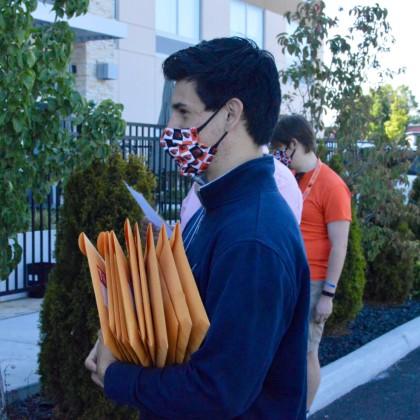 |
TRACE results suggest 17% of Hermiston community infected with SARS-CoV-2 |
Preliminary results from random door-to-door TRACE-COVID-19 sampling by Oregon State University last weekend suggest that 17% of the Hermiston community had the novel coronavirus that causes COVID-19 on July 25-26. |
 |
Information session set for companies interested in PacWave subsea power cable project |
In preparation for a solicitation of bids for five 12-mile long subsea cables to support a wave energy testing facility, Oregon State University will host an information session for companies interested in the project. |
 |
OSU data science initiative addresses issues in Oregon’s rural communities |
Data Science for the Public Good leverages OSU's significant expertise, resources and infrastructure to address community needs. |
 |
For rufous hummingbirds, migration looks different depending on age and sex |
Plucky, beautiful and declining in numbers at about a 2% annual rate, the rufous hummingbird makes its long annual migration in different timing and route patterns based the birds’ age and sex. |
 |
Oregon scientists team up to use big data to address societal challenges |
Data scientists from Oregon’s three largest universities have received a $1.4 million National Science Foundation grant to help fellow scientists across the Pacific Northwest address challenges such as earthquake preparedness, securing electrical power systems and improved environmental health. |
 |
Discovery of first active seep in Antarctica provides new understanding of methane cycle |
The discovery of the first active methane seep in Antarctica is providing scientists new understanding of the methane cycle and the role methane found in this region may play in warming the planet. |
 |
OSU researchers part of international effort to save critically endangered seabird |
The global population of the critically endangered Chinese crested tern has more than doubled thanks to a historic, decade-long collaboration among Oregon State University researchers and scientists and conservationists in China, Taiwan and Japan. |
 |
Timing key in understanding plant microbiomes |
CORVALLIS, Ore. – Oregon State University researchers have made a key advance in understanding how timing impacts the way microorganisms colonize plants, a step that could provide farmers an important tool to boost agricultural production. |
 |
Predation by Caspian terns on young steelhead means fewer return as adults |
Caspian terns feeding on young fish have a significant impact on runs of steelhead in the Columbia River, according to a new paper from scientists at Oregon State University. |
 |
OSU researcher joins ‘Ocean Nexus’ collaboration with UW to study equity in ocean governance |
Oregon State University researcher Ana K. Spalding has received a grant from a recently established ocean research center to study issues of equity and inclusion in ocean governance. |